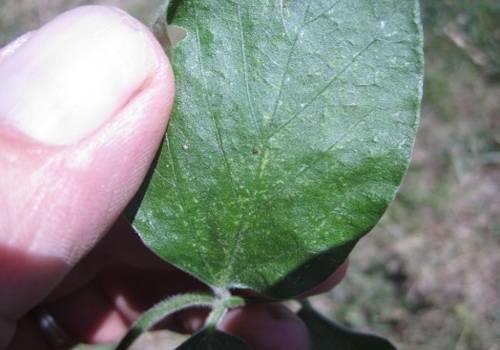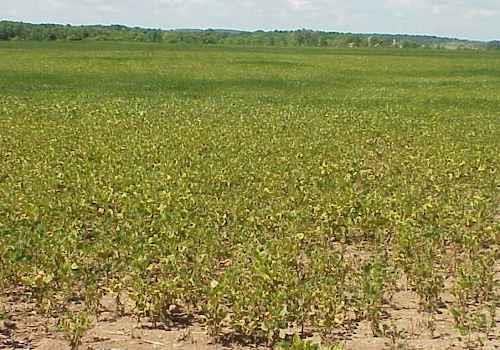By Bryan Jensen
How is this drought going to impact insect and mite pests on field crops? Well, there is an old adage that only fools try to predict the weather. I do not know of a similar saying about people predicting insect populations based on weather, but if there were, I don’t think it would be flattering. We are in the middle of a very unusual early-season drought. If it continues it will likely have negative and positive impacts on some of our insect and mite pests. Keep in mind that many factors affect insect and mite abundance. Weather is only one, therefore, back-seat predictions are not always reliable. So, no predictions will be offered. Just “an overabundance of caution”.
Hot/dry weather tends to have a positive influence on potato leafhopper populations. Currently, populations are low, which is not unusual for this time of year. However, we are starting to see some nymphs emerging and that is when populations can take off. No guarantees but this is one insect to keep an eye out for in both established and new seedings of alfalfa.
Two-spotted spider mites are the unknown wild card right now. We certainly have had favorable weather and it certainly would be important to spot check likely areas (field edges, knolls, etc.) just for an early heads-up. Mites are very small and difficult to see. Unfortunately, detection of economic populations often comes after injury is observed. Placing a white sheet of paper under leaves while tapping them can be a good method for detection.
Economic thresholds, as we commonly think of them, are not available for either corn or soybean. Rather, a damage rating scale has been used to determine treatment timing. In corn, consider treatment when damage (stippling) is visible on the lower 1/3 part of the plant and active mite colonies are found on the middle 1/3. Consider treating soybean when heavy stippling is found on the lower leaves and some stippling in found on the middle leaves. Mite colonies should be present in the middle canopy but scattered in the upper canopy. Unfortunately, these scales reflect late-season crop stages and growing conditions.
Mite management is difficult and must be done in a timely fashion. Yet treating before necessary can exacerbate problems by killing natural enemies which are helpful for long-term control. If considering treatment make sure mite colonies are active and future weather patterns will be hot and dry.
Choose an insecticide/miticide that is labeled for control, not suppression. Several active ingredients and mode of actions are available. Some products will have a label for both corn and soybeans. Others may not. Read labels thoroughly for best treatment timing, life stages controlled, REI, PHI and resistance management requirements.
A decision to treat mites early season is not to be taken lightly because we have a lot of growing season in front of use to remind us of a poor decision. Scout treated fields after the REI has expired to make sure you had good control. Rotate modes of actions if retreating. Two-spotted spider mites develop resistance easily and labels may require it.

Early symptoms (stippling) of twospotted spider mite damage

Soybean field showing advanced twospotted spider mite damage symptoms.
Source : wisc.edu